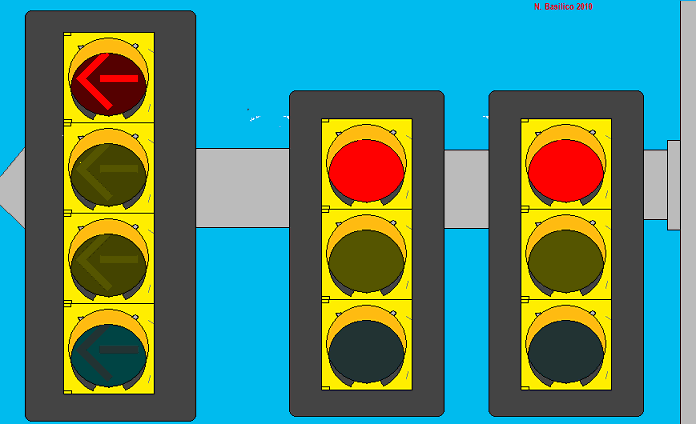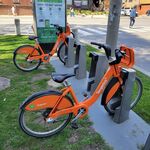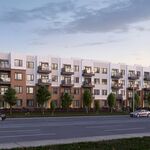salsa
Senior Member
Took some photos yesterday around Don Mills & Eglinton












How does this relate to Toronto you might be asking? Well in Toronto it's the complete opposite, we dont have anywhere close to the amount of corruption that Montreal once had and we yet still cant even get our act together with the construction of an LRT project (not let alone a massive subway project). Don't get me wrong, the Crosstown is pretty big in it's own right, but we manage to hack and slash it so much that it cant even operate to its fullest potential. For goodness sake we cant even activate full signal priority, and that's just an outright laughable joke. It's almost the equivalent of having a train stop at an at-grade crossing to wait for traffic to pass, before the train starts and continues again (in other words it makes no sense, but yet that's what we're doing here in Toronto).
Good transit priority is certainly desirable. However, the lack of such priority is a relatively minor shortcoming that won't substantially undermine the utilty of the Crosstown service.
I would say the opposite, on two grounds.
One is that there is an objective, quantitative reduction in trip time possible with transit priority, and it's a matter of minutes, not seconds on a cross town trip. We are investing billions in a line but nailing its feet to the floor by not making it as marketable and useful as possible. I don't have an actual statistic to cite, but I am confident that an ambling, stoplight pausing LRT will appear to the public as much closer to a traditional streetcar than a high quality higher order transit option. This is not "minor" in terms of marketability or modal share... or ridership and revenue.
The bigger issue is the adamant refusal of Toronto's Transportation Department to embrace transit priority at all, anywhere, in the city. It may be true that nothing at a technology level prevents this function from being retrofitted to Crosstown. It's the bureaucracy that stands in the way, coupled with the lack of awareness at the political level that this technology is a gamechanger. And the bureaucracy is dug in. It's no different than Council endorsing energy conservation but not knowing what a LED light bulb is, and therefore not reacting if Toronto Hydro were to insist that only tungsten light bulbs be used in the city.
This *is* a big deal.
- Paul
I'd describe it as much more than a minor shortcoming. Having no signal priority will allow for bunching to happen on the at-grade section of the line, much in the same way bunching occurs on the 510 Spadina route. The TTC's poor line management will certainly allow for it there's no doubt about that. Even though all vehicles will have GPS which will allow them to know the exact positioning of each vehicle, it's clear they dont know how to use it properly.Good transit priority is certainly desirable. However, the lack of such priority is a relatively minor shortcoming that won't substantially undermine the utilty of the Crosstown service.
It's not like the Yonge subway always runs uninterrupted. Doesn't wait for the crossing traffic, obviously, but is still affected by signal problems etc, and gets delayed occasionally.
Plus, once the Crosstown rails are in place, improving the transit priority can be done in the near future and that won't involve any major capital expenses.
No guys, this is not a minor issue. If you've been to Eglinton in the past year. You probably saw the LEFT TURN SIGNAL. 12/15 surface intersections currently have left turn signals to let cars turn or u-turn. This is where the problems starts. THE LEFT TURN SIGNALS ARE 20 SECONDS LONG! If we do some simple math, in the really worst-case scenario where the LRT has to stop at every red. 12 x 20 = 240 seconds or 4 minutes. That's a lot of waiting for rapid transit. That also does not include dwell time at stops.

Assuming these numbers are correct:No guys, this is not a minor issue. If you've been to Eglinton in the past year. You probably saw the LEFT TURN SIGNAL. 12/15 surface intersections currently have left turn signals to let cars turn or u-turn. This is where the problems starts. THE LEFT TURN SIGNALS ARE 20 SECONDS LONG! If we do some simple math, in the really worst-case scenario where the LRT has to stop at every red. 12 x 20 = 240 seconds or 4 minutes. That's a lot of waiting for rapid transit. That also does not include dwell time at stops.
It's the one thing every transit user requested and it's the one thing that's not being implemented.Good transit priority is certainly desirable. However, the lack of such priority is a relatively minor shortcoming that won't substantially undermine the utilty of the Crosstown service.
The signal problems are an issue with age and lack of SOGR maintenance. You don't have somewhat regular signal issues on systems, with the exception of NYC. I've never heard of any recurring signal issues on SEPTA's BSL or Boston's Red/Orange lines. I guarantee that if you neglected the crosstown signaling system for 50 years, the reliability would be even worse than the Yonge Subway's fixed block signaling system today.It's not like the Yonge subway always runs uninterrupted. Doesn't wait for the crossing traffic, obviously, but is still affected by signal problems etc, and gets delayed occasionally.
Unless transit priority can only really be achieved with grade separation (because surface traffic management and ease of movement still has to occur), then we just built a giant line in the wrong place.Plus, once the Crosstown rails are in place, improving the transit priority can be done in the near future and that won't involve any major capital expenses.
I'll try to get some footage later. I frequent the area of Eglinton quite frequently. The dedicated left turn phases feel like they take forever, and only a few cars go through anyway.Do you have photos of the LEFT TURN SIGNALS. Do they still have the visual clutter of verbage signs?
Assuming these numbers are correct:
4 minutes waiting for Left Turn signalling would result in 10% longer travel times (assuming one is traveling from Mount Dennis to Kennedy) solely waiting for left turning vehicles. If you factor in the rest of the non-signal priority mess, that number could easily rocket up to 15-20%.
No guys, this is not a minor issue. If you've been to Eglinton in the past year. You probably saw the LEFT TURN SIGNAL. 12/15 surface intersections currently have left turn signals to let cars turn or u-turn. This is where the problems starts. THE LEFT TURN SIGNALS ARE 20 SECONDS LONG! If we do some simple math, in the really worst-case scenario where the LRT has to stop at every red. 12 x 20 = 240 seconds or 4 minutes. That's a lot of waiting for rapid transit. That also does not include dwell time at stops.




